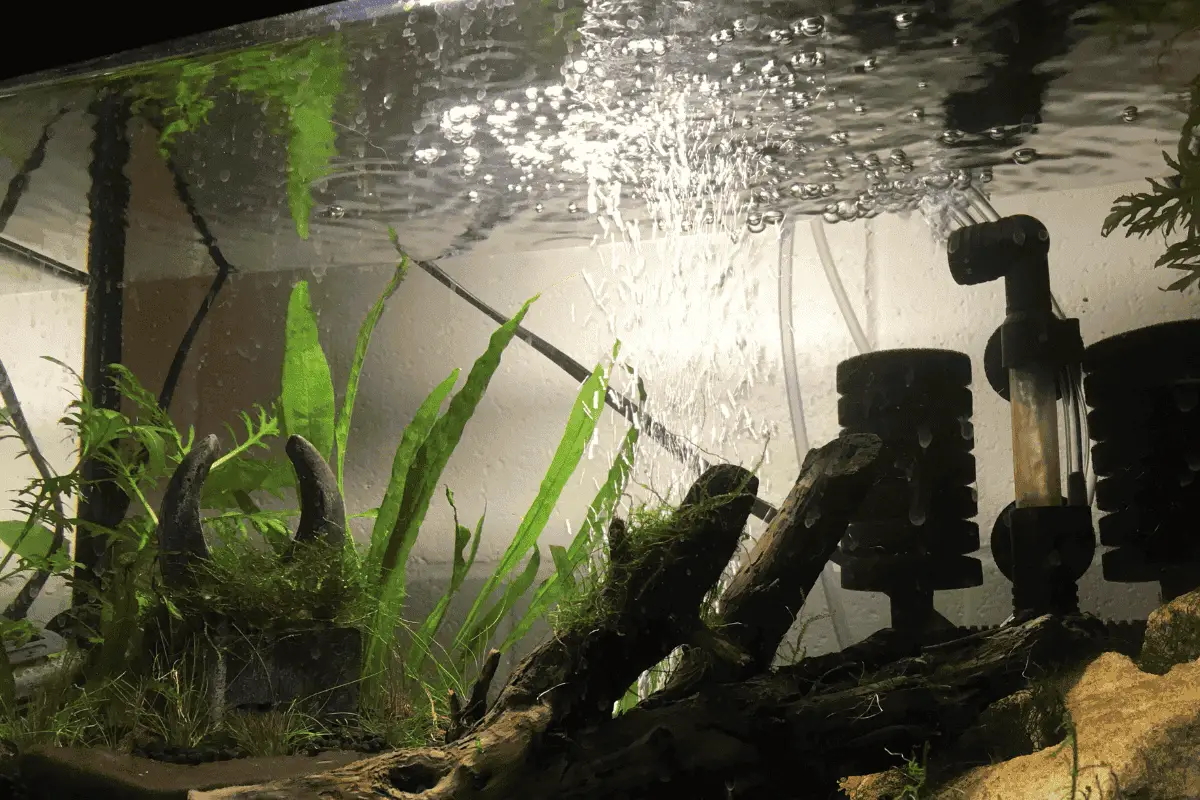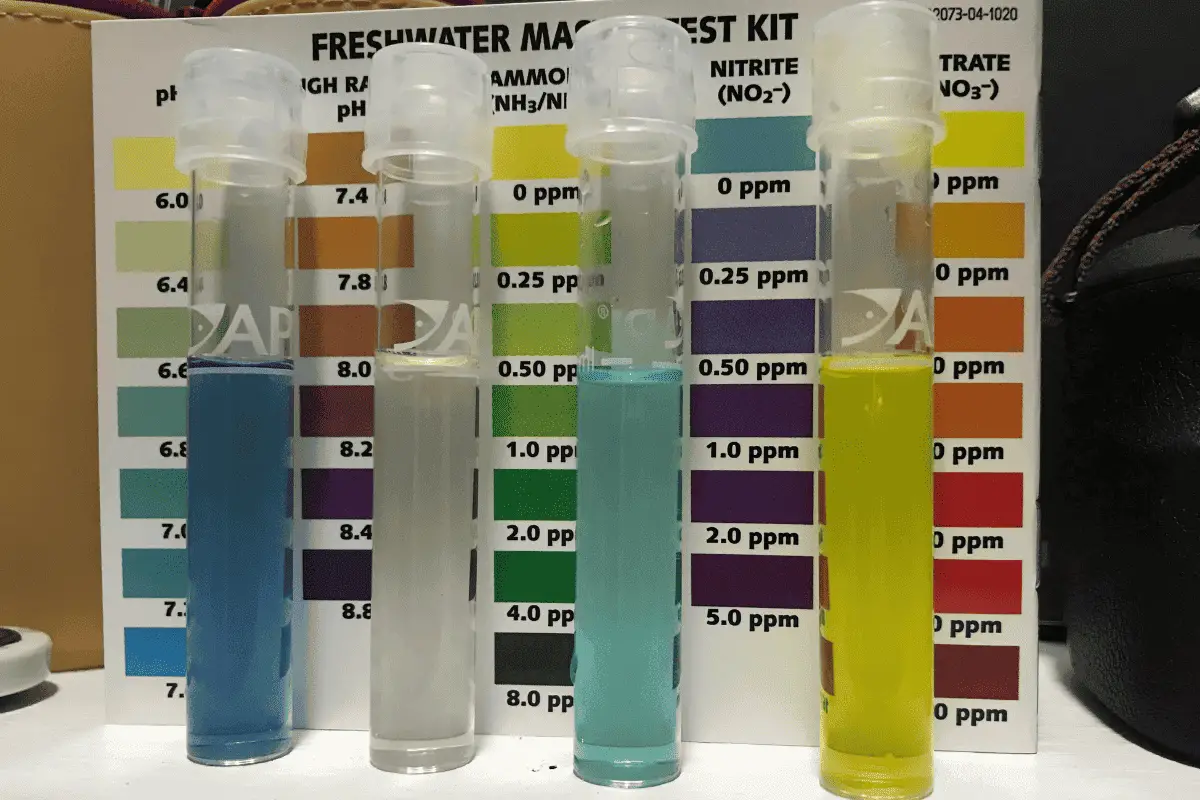Angelfish are truly captivating, I agree. They look great and it’s exciting to watch them lay eggs.
But what do their eggs look like? How can you tell if the eggs are fertilized, not fertilized, or infected? And what should you do in each case?
In this article, we’ll cover all of that, so you’ll leave knowing everything you need. Let’s get started.

What Do Angelfish Eggs Look Like?
When it comes to the appearance of Angelfish eggs, there are three primary scenarios to consider. Here’s a short overview:
| Feature | Fertilized Angelfish Eggs | Unfertilized Angelfish Eggs | Angelfish Eggs Affected by Fungus |
| Color | Translucent to light brown/orange | Whitish or clear | Whitish with fuzzy growth |
| Size | Uniform, 1-2 mm diameter | Similar, but with more variation | Swollen, enlarged due to fungal growth |
| Shape and Clustering | Oval, neatly clustered | Less uniform, may be scattered | Not specifically altered by fungus |
| Attachment Strength | Strong attachment to spawning site | Less securely attached | Not directly affected by fungus |
| Overall Appearance | Neatly arranged, color changes | Lack uniformity, remain pale | Opaque, cotton-like fungal overlay |
Also Read: Angelfish Eggs Care
What Do Angelfish Eggs Look Like?
When discussing the appearance of angelfish eggs, it’s important to distinguish between fertilized, unfertilized, and eggs infected with fungus:
1. Fertilized Angelfish Eggs

Fertilized angelfish eggs are a sign of successful breeding in your aquarium. They undergo noticeable changes as they develop, indicating healthy embryo growth.
- Color Transformation: Initially translucent or pale, these eggs gradually turn a light brown or orange color as embryos develop, typically within 24-48 hours.
- Size Consistency: Fertilized eggs are uniformly small, about 1-2 millimeters in diameter, resembling tiny beads on the spawning surface.
- Shape and Clustering: These eggs are oval and neatly clustered, often laid in straight lines or slight curves on flat surfaces like leaves or glass.
- Attachment Strength: They exhibit a strong attachment to the spawning site, thanks to a sticky substance, ensuring stability for developing embryos.
2. Unfertilized Angelfish Eggs

Unfertilized eggs indicate a lack of successful fertilization, either due to male infertility or spawning issues.
- Color Stagnation: They remain whitish or clear, lacking the color change to brown or orange seen in fertilized eggs.
- Slight Size Variations: While similar in size to fertilized eggs, they may show more variation and lack the uniform appearance.
- Vulnerable Positioning: These eggs are less securely attached and may fall off the spawning surface or be scattered.
- Susceptibility to Decay: Unfertilized eggs are prone to decay and fungal infections, often deteriorating faster than fertilized ones.
3. Angelfish Eggs Affected by Fungus

Fungal infections in angelfish eggs are common, especially in unfertilized or dead eggs.
- Whitish Fuzzy Growth: Infected eggs display a characteristic cotton-like, whitish fungal growth, making them easily distinguishable.
- Rapid Spread: The fungus can quickly spread to adjacent eggs, threatening the health of the entire clutch.
- Size Enlargement: Affected eggs may swell and appear larger than healthy eggs due to the fungal overlay.
- Opacity Increase: These eggs turn opaque, losing their translucency, and often become a focal point for further fungal growth.
Angelfish Egg Development Phases
Angelfish egg development is a precise and rapid process, with the journey from fertilization to hatching typically spanning just about 48-60 hours.
This timeline offers a clear window into the embryonic development of angelfish.
- Fertilization (Hour 0): Following spawning, fertilization occurs almost immediately, with eggs initially appearing clear and then quickly turning a light amber or orange color.
- Embryo Formation (Hour 12-24): Within the first 12 to 24 hours, small embryos start to form, visible as tiny specks in the center of each egg, indicating the onset of critical developmental stages.
- Eyes and Tails Development (Hour 24-36): By the 24 to 36-hour mark, distinct eyes and tails begin to develop, signifying advanced embryonic growth and health.
- Pre-Hatching Movement (Hour 36-48): Around 36 to 48 hours post-fertilization, the embryos start showing pre-hatching movements, indicating their preparation for the imminent hatching phase.
- Hatching (Hour 60): Typically, at around the 60-hour mark, the eggs hatch, releasing free-swimming larvae that initially remain attached to the spawning surface, absorbing their yolk sac for nourishment.
Also Read: Angelfish Eggs Growth Stages

Do Different Angelfish Species Have Similar Egg Appearances?
Yes, different angelfish species generally have similar egg appearances.
The eggs are typically small, about 1-2 millimeters in diameter, and are initially translucent or pale, turning light brown or orange if fertilized.
This consistency in appearance is seen across various species, such as Pterophyllum scalare and Pterophyllum altum.
When Can You Identify Unfertilized Angelfish Eggs?
Unfertilized angelfish eggs can usually be identified within 24 to 48 hours after spawning.
Unlike fertilized eggs, which turn a light brown or orange, unfertilized eggs remain clear or whitish and may start to develop a cottony fungus.
They also tend to lose their adherence to the spawning surface and may be scattered or fall off, further indicating their unfertilized status.

How to Care for Angelfish Eggs
To ensure the healthy development of fertilized angelfish eggs, it’s crucial to provide an optimal environment and monitor them closely. Here’s what you should do:
1. Tips for Healthy Fertilized Eggs
Ensuring the health of fertilized angelfish eggs involves specific care practices. It’s crucial to create an environment that supports their development and guards against potential problems.
- Maintain Water Quality: Keep the water at a stable temperature of 78-82°F (25.5-27.8°C) and a pH level of 6.5-7.0. Regularly check these parameters using a reliable aquarium thermometer and pH test kit.
- Gentle Aeration: Use an air stone or a filter outlet to provide gentle water movement. This should be just enough to create a slight ripple on the water’s surface near the eggs. My recommendation: Hygger Aquarium Air Stone (link to Amazon).
- Prevent Fungal Growth: Add a mild antifungal agent like methylene blue to the water, following the dosage of about 2-3 drops per gallon. This helps prevent fungal infections, a common issue with densely laid eggs.
- Limit Disturbance: Avoid unnecessary movement or changes in the tank. If possible, isolate the breeding pair and eggs in a separate tank to reduce stress and prevent other fish from disturbing the eggs.

2. Managing Unfertilized Eggs
Unfertilized angelfish eggs require different care to prevent them from affecting the healthy development of other eggs or the overall aquarium environment.
- Timely Removal: Identify and remove unfertilized eggs, which remain clear or turn white, within 24-48 hours to prevent decay and fungal spread.
- Use a Siphon: Gently siphon out the unfertilized eggs using a small aquarium siphon or turkey baster, being careful not to disturb the fertilized ones.
- Monitor for Changes: Keep an eye on the remaining eggs for signs of fertilization (color change to brown or orange) and remove any additional unfertilized eggs that appear.
- Maintain Cleanliness: After removal, perform a partial water change to ensure water quality remains high, removing any debris or remnants of the unfertilized eggs.

3. Dealing with Fungus-Infected Eggs
Fungus-infected angelfish eggs need immediate attention to prevent the spread of infection to healthy eggs.
- Immediate Isolation: As soon as you notice a fuzzy, white growth on any eggs, isolate them by gently removing them from the spawning site.
- Use Fungicidal Treatment: Apply a fungicidal treatment like Acriflavine or Pimafix, following the recommended dosage on the product (usually a few drops per gallon).
- Increase Aeration: Boost aeration in the tank to improve water quality and oxygen levels, which can help hinder fungal growth.
- Regular Water Tests: Perform frequent water quality tests to ensure parameters like ammonia, nitrites, and nitrates are within safe levels, adjusting as necessary.

Steps to Take If Fertilized Angelfish Eggs Do Not Hatch
If fertilized angelfish eggs don’t hatch, it’s important to assess and remedy any potential issues.
This requires a thorough check of environmental conditions, parental behavior, and egg health.
- Check Water Parameters: Ensure the water temperature is consistently between 78-82°F and the pH level is between 6.5 and 7.0 using reliable aquarium testing kits.
- Inspect for Fungal Infection: Look for white, cotton-like fungal growths on eggs; if present, treat with an appropriate antifungal agent at the recommended dosage.
- Evaluate Parental Care: Observe if the breeding pair is disturbing the eggs excessively or not enough; intervene if necessary, possibly by separating them.
- Assess Egg Viability: If eggs remain unhatched past 60 hours, gently probe them to check for movement; non-viable eggs often appear discolored and inert.

Conclusions
For quick readers, here’s a short summary:
- Fertilized angelfish eggs change from translucent to light brown or orange within 24-48 hours, indicating healthy embryo development, and are firmly attached to the spawning surface.
- Unfertilized angelfish eggs remain whitish or clear, show size variations, are less securely attached, and are prone to decay and fungal infections.
- Fungal infections in angelfish eggs cause a whitish, cotton-like growth, rapid spread to adjacent eggs, swelling, and increased opacity of the affected eggs.
- Angelfish egg development spans about 60 hours, with distinct phases including fertilization, embryo formation, eyes and tails development, pre-hatching movement, and hatching.
- Care for angelfish eggs involves maintaining water quality, providing gentle aeration, using antifungal agents, limiting disturbances, and isolating infected or unfertilized eggs.
